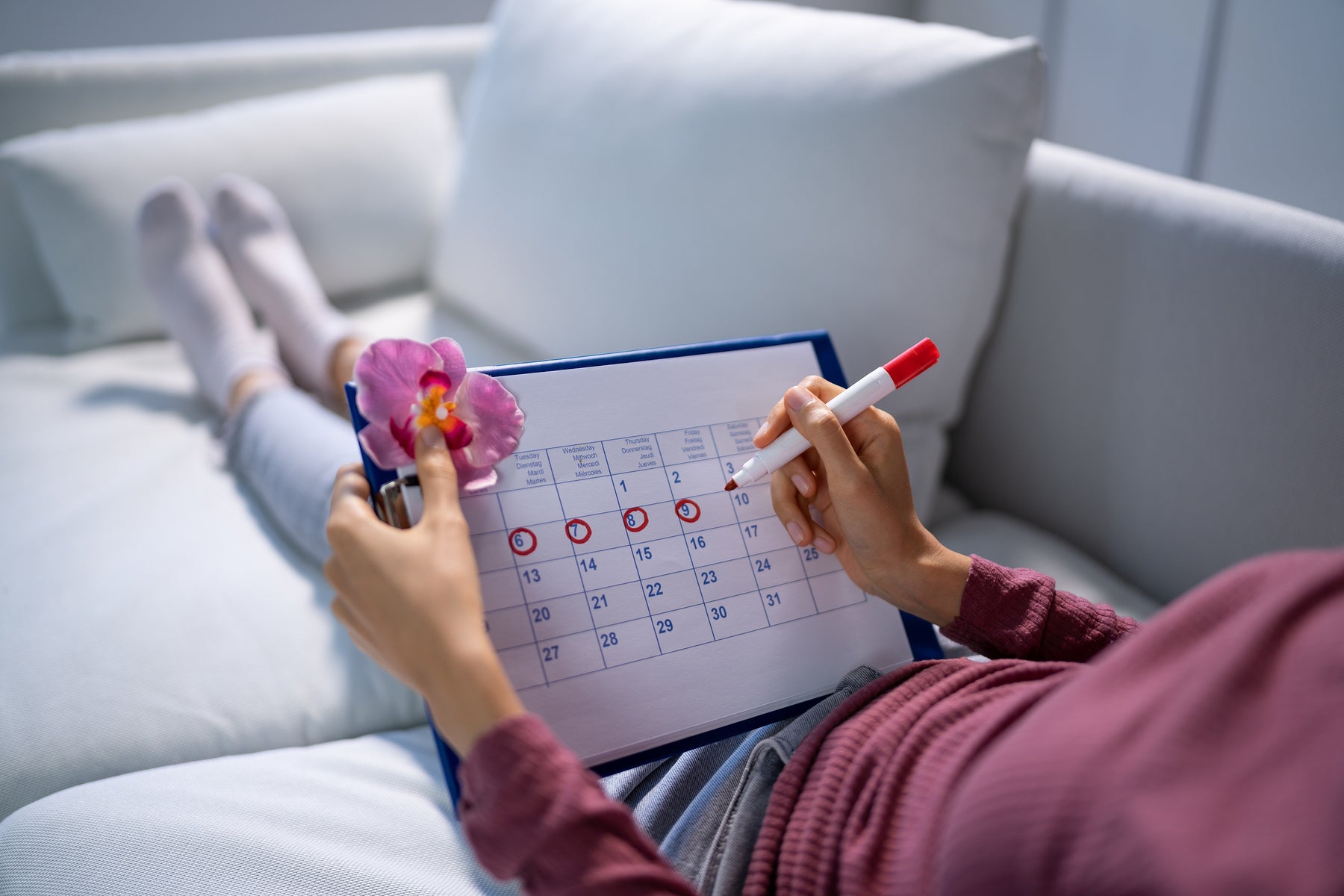
How to Optimize Training Around Your Menstrual Cycle
You may be surprised how much your hormones fluctuate through the 28-day menstrual cycle and how much it could affect your strength training from day to day. When you sync your athletic training with your menstrual cycle, you can maximize the times you can perform best with harder workouts. Meanwhile, you can focus on recovery during the times your body is less geared up for performance. While your cycle shouldn't dictate your workout schedule, it can help to work with your cycle and know how to avoid working against it.
How Your Menstrual Cycle Can Affect Your Training
The menstrual cycle causes hormone fluctuations that make your body better optimized for training at certain times of the month and less optimized at other times. Here are the phases that affect your athletic performance in roughly 28 days:
1. Your Follicular Phase
The menstrual bleeding phase kicks off the follicular phase of the menstrual cycle, which will include the full time before the release of the egg. Estrogen and progesterone drop at the beginning of the follicular phase, but estrogen slowly rises by the end of it. During the initial hormone fluctuation, you may experience inflammation. You could have slightly longer recovery times from workouts, and it's important to drink extra fluids.
After the first few days have passed and you're no longer bleeding, you may feel more energized during your follicular phase, making it a great time for harder workouts. With lower progesterone levels, you can actually make greater muscle gains throughout the follicular period. The best way to optimize your training around your menstrual cycle is to schedule your toughest workouts for the days after menstruation but before ovulation.
2. Your Ovulation Phase
After about 16 days from your first bleeding day, your ovulation phase begins, which only lasts around 24 hours. Luteinizing hormones and estrogen are high during this phase. You may experience cramps on one side of your pelvic region during ovulation, potentially making it difficult to work out.
3. Your Luteal Phase
From the end of ovulation, your estrogen levels stay high and are met with rising progesterone levels. The luteal phase lasts 11-17 days. The effects of high estrogen and progesterone can include fluid retention and decreased muscle-building capacity. If you experience PMS, you may have symptoms like fatigue or bloating. It's not the best time for your most challenging workouts, but it's a good time for easier workouts and more recovery days.
How Training Can Affect Your Menstrual Cycle
While the menstrual cycle affects some aspects of your training, you can also make an impact on your menstrual cycle through regular training. Working out on a consistent basis throughout the month helps prevent symptoms of PMS (premenstrual syndrome). It can also prevent painful symptoms that occur during menstruation, like cramping and headaches.
Research shows that in highly athletic women, such as female triathletes, the menstrual cycle phases don't affect muscle performance. It's possible that regular exercise prevents the amount of hormone fluctuation and minimizes the effects it has on the body.
Working Out During Menstruation
There's no difference between working out and working out while on your period, outside of any menstrual symptoms you're experiencing, such as fatigue, cramps, or other symptoms. There's no reason to avoid working out during your period. In fact, your mood can benefit from the endorphin release of either cardio or strength training. That said, you don't need to exert yourself during your period, especially if you already feel fatigued.
On less heavy days and when your bleeding stops, you can take advantage of the follicular phase (the first 16 days of the cycle, starting with menstruation) to workout at the top of your game. When you're performing your best, you can better train your muscles and give them the best challenge possible.
The Best Time in the Menstrual Cycle to Work Out
Generally, there's no need to alter your training schedule for your menstrual cycle. There's definitely no need to avoid working out during your period or leading up to it, unless you have pain. However, you could potentially maximize your workout gains by timing your most challenging workouts in the follicular phase.
The best time for menstruating women to make the most muscle gains from a workout, according to research, is during the follicular phase, as opposed to the luteal phase. Measurably, women have more muscular force, diameter, and fiber composition during the follicular phase, optimizing the body for peak physical performance.
The workout that always takes it out of you and leaves you sore for days? Do that during the follicular phase. The luteal phase could mean there's a little bit more inflammation already going on in the body, as well as fluid retention and other symptoms that could minimize performance. You can save your less challenging routines for the luteal phase, as well as designate it for longer recovery times.
Exercise and PMS
Premenstrual syndrome, or PMS, is commonly experienced in menstruating women and can include varying symptoms such as irritability, sadness, abdominal cramping, breast tenderness, and fatigue. In a study involving 40 women experiencing symptoms of PMS, an hour of aerobic exercise 3 times a week was shown to reduce symptoms in 8 weeks. By boosting endorphins and lowering the stress hormone cortisol, exercise can benefit your mental health during PMS. It will also benefit you long-term for PMS in future cycles as long as you stay consistent.

Leave a comment